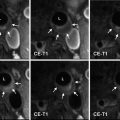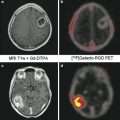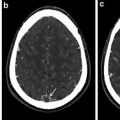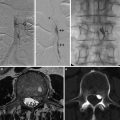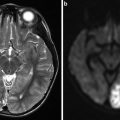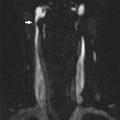Molecule
Function
Nitric oxide (NO)
Vasodilator
Prostacyclin (PGI2)
Vasodilator
Endothelin-1 (ET-1)
Vasoconstrictor
Endothelium-derived contracting factors (EDCF)
Vasoconstrictor
The activity of the VSMC can be regulated directly by the sympathetic and parasympathetic system, by the circulating catecholamines (adrenaline and noradrenaline) and other molecules such as angiotensin II, antidiuretic hormone (ADH), and corticosteroid [4].
Pathogenesis of Atherosclerosis
The pathogenesis of atherosclerosis is a complicated and still not well-known multistep process. Most of these processes are chained one to each other, and a huge number of factors are involved.
In this paragraph, we will try to explain the main elements and mechanisms which lead to the formation of the atherosclerotic plaque.
Endothelial Injury and Dysfunction
In paragraph two, we have seen how the endothelium has to be considered not just an internal smooth cover of the artery but an active tissue important for many functions. On the surface of the endothelium, a great number of receptors are present, for example, insulin, serotonin, histamine, serum lipoproteins, and adhesion molecules more expressed during the inflammatory status.
The endothelium is also able to produce many chemical substances, including nitric oxide (NO) via the endothelial isoform of the nitric oxide synthases (eNOS) [1, 2, 5]. This chemical mediator has a very simple chemical structure; it is unstable, with a very short life (very low seconds), and once it is produced, it acts on the VSMC inducing vasodilation and slowing their proliferation and reduces the expression of adhesion molecules for macrophages on the endothelial surface (see below) [6, 7].
The first step of the pathogenesis of the atherosclerosis is the endothelium damage [1, 2, 7]. This process occurs more frequently in those arterial regions in which the blood flow is non-laminar or turbulent (e.g., the bifurcations or the origin of collateral vessels) [1], and it is favored by “risk factors” such as hypertension, smoking, and hypercholesterolemia through mechanisms like free radical oxidation and the activation of multiple genetic pathways [2, 7].
The endothelial damage is characterized by the expression of pro-inflammatory receptors on their surface, the reduction of the production of the NO, and the rearrangement of the junction and cytoskeletal proteins [2, 8, 9]. The final results are an increased endothelial cell turnover, an increased permeability of the endothelium with the recruitment of inflammatory cells (mainly scavenger macrophages), and the accumulation of lipoproteins (in particular LDL; see below) beneath the tunica intima [2]. This process tends to have a positive feedback: the more the permeability, the more the inflammation, the more the lipid accumulation, the more the reduction of the caliber of the lumen of the vessel, and the more the endothelial damage induced by the blood flow (together with the other risk factors we have seen before).
Plaque Growth and Evolution
Once the endothelial damage has started, the process continues with the formation of the atherosclerotic plaque.
The first lesions evident in the arteries are the so-called fatty streaks, which are linear lesions well evident in particular in younger patients. These kinds of lesions tend to modify during the years, according to various factors:
Non-modifiable factors (genetic, familiarity)
Modifiable factors
The modifiable factors include the “risk factors” mentioned before, i.e., hypertension, dyslipidemia and hypercholesterolemia, obesity, diabetes, and smoke (Table 2): the presence of these factors accelerates the process and formation of the atherosclerotic plaques, increasing the probabilities of minor and major cardiovascular and cerebrovascular events and pathologies of the peripheral vascular system [10].
Table 2
Principal modifiable risk factors of atherosclerosis
Principal modifiable risk factors |
|---|
Hypertension |
Dyslipidemia and hypercholesterolemia |
Obesity |
Diabetes |
Smoking |
At a microscopic level during this phase, the macrophages, the T cells, and the VSMC are the most important cellular elements involved; they operate inside the growing lesion in an inflammatory context, interacting in particular with the low-density lipoproteins (LDLs).
LDLs are lipoproteins with a very high rich content in cholesterol. These lipoproteins circulate free in the blood. When the endothelium is damaged, the LDLs can infiltrate beneath the tunica intima and accumulate into the growing plaque. At this level, they are susceptible to the oxidative stress of various enzymes such as myeloperoxidases and lipoxygenases (produced and released normally during an inflammatory process by the immunity cells). The oxidized LDLs (oxLDLs) thanks to their cytotoxic action promote the recruitment of monocytes from the blood circulation upregulating the expression of adhesion molecules on the surface of the endothelial cells [2, 11]. Once they have penetrated inside the plaque, they differentiate into resident macrophages [1]. OxLDLs phagocytized by the macrophages are more resistant to degradation of their lysosome, and the macrophages continue to accumulate cholesterol, becoming foam cells [2]. The death of the foam cells led to the formation of the necrotic lipidic core inside the plaque [1].
The macrophages continue to feed this inflammatory reaction producing chemokines such as monocyte chemoattractant protein-1 (MCP-1), interferon-γ (INF-γ), and macrophage colony-stimulating factor (MCFS), which increase recruitment of other inflammatory cells [2].
Some of these chemokines attract in the growing plaque and stimulate the proliferation of the VSMC [1]. These cells produce extracellular proteins such as collagen and elastin, producing a fibrous cap over the plaque and contributing to the stability of itself; other molecules produced, the proteoglycans and fibronectin, create a reticular web that contribute to trap LDLs inside the lesion [12]. Other molecules produced are the matrix metalloproteinases (MMPs), whose role in the degradation of the extracellular matrix is very important in the macrophage migration and destabilization of the plaque [13, 14].
Stay updated, free articles. Join our Telegram channel

Full access? Get Clinical Tree


